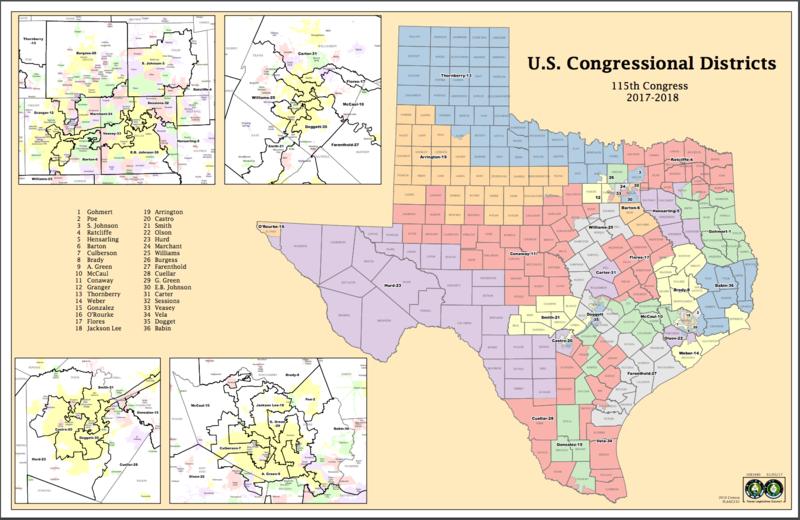Tomorrow the questions of what happens next in the redistricting lawsuits begin to get answered.
Will Texas soon see new political maps that are friendlier to Latino and black voters and, in turn, Democrats? If so, who would draw them: the scolded Republican-led Legislature or the courts themselves? Will the maps land ahead of the 2018 elections?
A three-judge panel based in San Antonio will start wading through such questions on Thursday as lawyers for each side of the redistricting dispute return to court for a high-profile status conference.
“This hearing is a very important event in the sequence of what’s going to happen,” said Jose Garza, an attorney for the Mexican American Legislative Caucus, a plaintiff in the case.
In a 2-1 March ruling, the San Antonio panel ruled that Texas lawmakers knowingly discriminated in drawing three of the state’s 36 congressional districts: CD-23, represented by Will Hurd, R-Helotes; CD-27, represented by Blake Farenthold, R-Corpus Christi; and CD-35, represented by Lloyd Doggett, D-Austin.
And last week the same judges found fault with the 2011 state House map, finding that lawmakers intentionally diluted the clout of minority voters statewide and in districts encompassing areas including El Paso, Bexar, Nueces, Harris, Dallas and Bell counties.
Each ruling matters mightily because, if they withstand appeals, they could ultimately land Texas — which has a well-documented history of racial discrimination in elections — back on a list of states needing outside approvalto change their election laws.
More immediate questions, however, surround what the rulings mean for the 2018 elections since new district lines could affect both voters and candidates. Already, one potential U.S. House candidate — former U.S. Rep. Pete Gallego — told The Texsas Tribune he would consider running again for Hurd’s CD-23 seat, but perhaps only under new boundaries.
[…]
Civil rights groups and other plaintiffs argue that 2011’s discrimination carried over to the maps currently in use.
Nina Perales, representing the Mexican American Legal Defense and Educational Fund in the lawsuit, suggests the case against the 2013 congressional maps is more straightforward partly because there are fewer districts in play and also because the court’s decision more clearly identified discrimination that carried over into the new maps. For instance, the boundaries of two of its districts — Farenthold’s 27th and Doggett’s 35th — are identical to those drawn in 2011.
“We get a better picture on the Congress decision about where the court thinks the map is still flawed,” Perales said. “We do not get a sense in the House opinion where the court thinks the 2013 map is flawed.”
See here and here for some background. There are a lot of questions for the court to address – Michael Li rounds up and summarizes the remaining disputes for the Congressional plan; there are no doubt at least as many issues still in contention for the State House plan – and not a lot of time to get something in place for the 2018 filing season, which begins in a bit more than six months. The plaintiffs had previously proposed a schedule that would have the state submit a remedial map by May 5, with a final decision in place by July 1. A similar schedule for the State House districts would mean a state-proposed remedial map by the beginning of June, with a final decision by early August. That actually gives the Legislature enough time to pass new maps if they want to, but with little room for delay. I can’t wait to see what the judges say.


Pingback: Trial to be set to determine 2018 maps – Off the Kuff